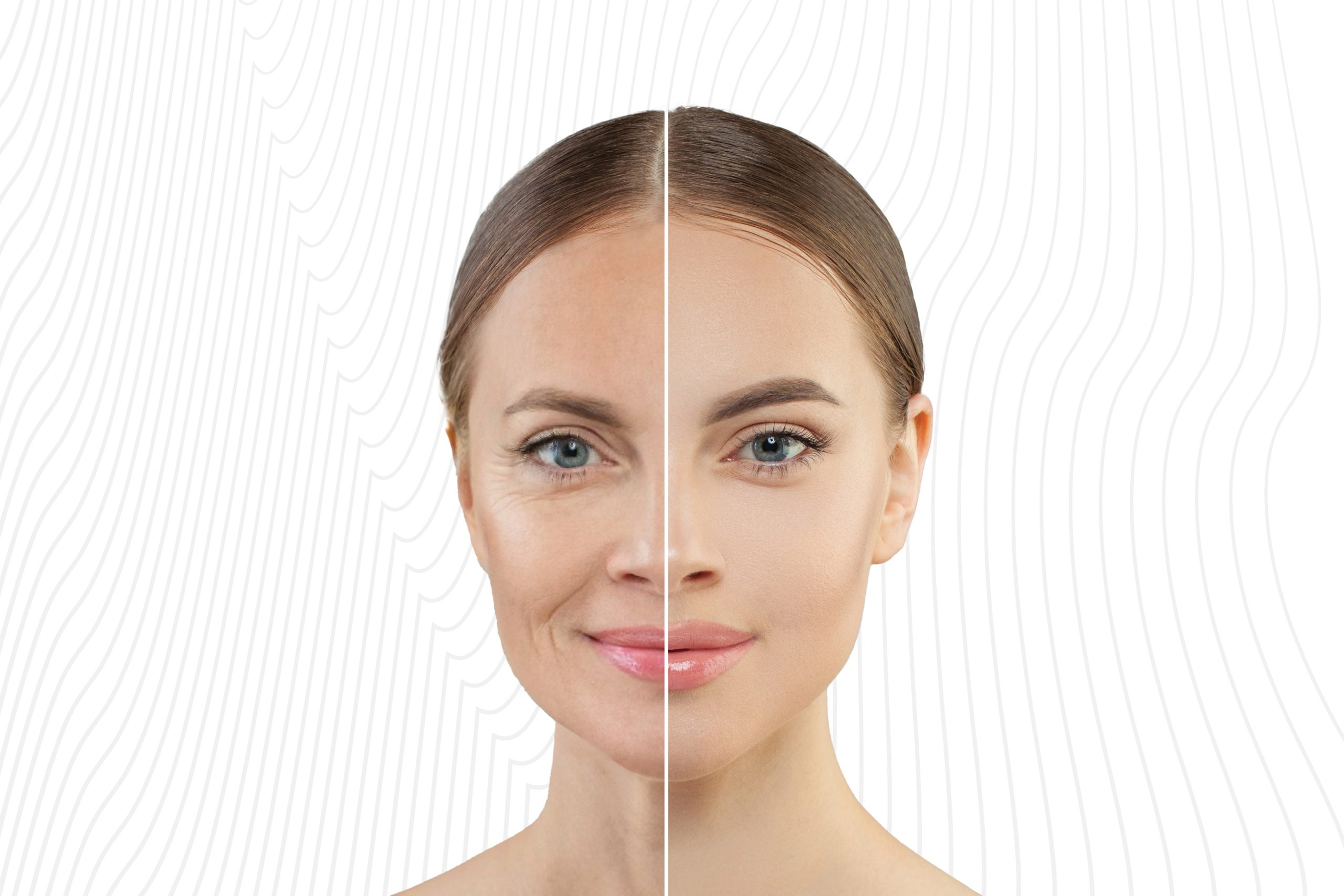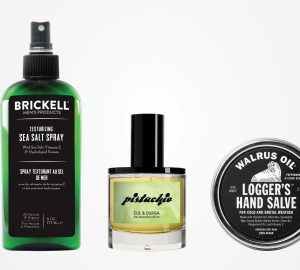Whether it’s crow’s feet around our eyes or furrows that form between our brows, the lines on our faces can tell people a lot about us—from our laughter and joy to our sorrows and stresses. Sometimes though, it would be nice if our fine lines said a little less. We’ve got the details on types of wrinkles, what can cause them and how to slow them.
brow
Eyebrows are responsible for many nonverbal cues, so the forehead is a common place for wrinkles to form. Worry lines typically run horizontally across the top of the T-zone. They are often formed by expressions of worry, shock and anxiety. They also can form vertically between the eyebrows.
eyes
The type of fine line most commonly associated with the eyes are crow’s feet. Also known as lateral canthal lines, they form at the outer corners and are caused by tiny muscles contracting as you make facial expressions. Crow’s feet usually start as only noticeable when smiling or squinting, and over time, they become visible even when the face is at rest due to the natural effects of aging.
nose
Bunny lines appear diagonally and vertically on the bridge or either side of the nose. Similar to crow’s feet, they are caused by the contraction of muscles when making different expressions, such as squinting or laughing. Another type of fine line around the nose are the nasolabial folds, or smile lines. These are creases that extend from both sides of your nose to the corners of your mouth. Despite their nickname, they are generally not caused by laughing or smiling repeatedly. Instead, it’s more often related to volume loss in the cheeks and reduced collagen and elastin in the skin. Weight gain and dental problems also can cause the nasolabial folds’ appearance to deepen.
mouth
Medically known as perioral wrinkles, lip lines form vertically around the perimeter of the mouth. They are caused by activity of muscles in the area, such as pursing the lips. Marionette lines can also form around the mouth. They extend from the corners of the mouth to the chin—reminiscent of the moving mouths of some dolls or ventriloquist dummies. Lines around the mouth are a natural part of aging; however, lifestyle factors like smoking, sun damage and alcohol consumption also can affect and prematurely deepen them.
neck
The skin of the neck is thin and delicate, making it susceptible to wrinkles and sagging. In fact, neck wrinkles can often appear before those on the face. “Tech neck” is a relatively new concern when it comes to fine lines. The phenomenon is caused by the repeated motion of muscles to look down at handheld devices or screens. The appearance of these lines can be compounded by looser skin.
static vs. dynamic
Wrinkles and fine lines generally fall into two categories: static and dynamic. Static wrinkles occur as we age due to the loss of elasticity in our skin that naturally occurs. Gravity takes over, causing the skin to droop and crease. An example is wrinkles that form alongside jowls. Dynamic wrinkles are caused by repeated facial movements. For example, if you frequently drink from a straw, the regular pursing of your lips could lead to the formation of fine lines. Dynamic wrinkles can become static wrinkles over time. For example, crow’s feet are caused by muscle contraction, but their appearance deepens with the loss of elastin and collagen in the skin that comes with age.
treatment for fine lines
If you’re worried about the severity of your wrinkles or want to halt the progression of fine lines, there are several medical interventions you can consider—oftentimes with little to no downtime. Consult a medical expert in cosmetics to determine if any of these are right for you.
- Botox: To fight the formation of dynamic wrinkles, this is a very common injectable option. It uses various forms of botulinum toxin to temporarily paralyze or relax muscle activity. It also can smooth out existing wrinkles. There is no downtime associated with the treatment, and results are typically visible within a few days. Botox treatments are effective for around three to four months.
- Dermal fillers: Another form of injectable, there are a variety of types of fillers that are used to treat wrinkles. The most common is hyaluronic acid, found in brands like Restylane, and Juvederm. It uses a natural component of the skin’s connective tissue to attract water to keep skin hydrated and flexible. Other types of filler may be recommended to treat deeper lines or address volume loss that comes with age. Following a treatment of fillers, you may experience swelling and bruising for around a week. How long results last depends on the type of filler used.
- Chemical peels: These treatments help improve the appearance of skin by increasing cell turnover. They work by using a chemical solution to remove the top layers of the skin, which allows new, smoother skin to grow back. Along with wrinkles, they can help with problems like acne, hyperpigmentation and scars. Chemical peels come in a variety of strengths, from light to deep. It may take a few light treatments to get the desired results. Deeper peels have more impact but take longer to recover from.
- Laser resurfacing: This technique uses short, concentrated beams of light to precisely remove the skin’s outer layer (or epidermis) while heating the underlying layer (dermis). It stimulates the production of new collagen, leading to the growth of new, firmer skin. Depending on the type of laser resurfacing, recovery usually takes from one to two weeks.
a wrinkle-reducing lifestyle
Skin damage that could lead to earlier or more prominent wrinkles can be thwarted. Along with a good skin care routine (don’t forget sunscreen!), here are some simple changes you can implement.
- Eat a healthy diet and reduce sugar intake.
- Stay hydrated.
- Lower alcohol consumption.
- Don’t smoke.
- Exercise more.
- Improve your sleeping habits.
- Reduce stress.
Sources: Mayo Clinic, Cleveland Clinic








